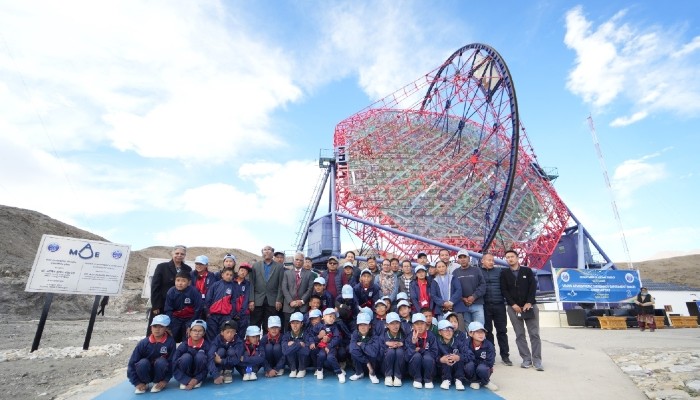
India has inaugurated Asia’s largest imaging Cherenkov telescope at Hanle in Ladakh. Located at about 4,300 meters, the Major Atmospheric Cherenkov Experiment, or MACE, observatory is the world’s highest telescope in this category.
MACE is designed indigenously by the Bhabha Atomic Research Centre in association with the Electronics Corporation of India Ltd (ECIL) and other industrial majors. It is a new landmark of Indian scientific pursuits. Atomic Secretary Dr Ajit Kumar Mohanty inaugurated the facility. “Projects like MACE hold a bright scope for scientific advancements and socio-economic developments in Ladakh, which is rich in its treasures,” said Atomic Secretary Dr Ajit Kumar Mohanty.
MACE will keep India at the forefront of cosmic ray studies worldwide, allowing scientists to study high-energy gamma rays with considerable detail. The observations by MACE promise deeper insights into some of the Universe’s most energetic phenomena: supernovae, black holes, and gamma-ray bursts.
The telescope is 21 m in diameter, weighing 175 tonnes, and has a reflector surface area of 356 square meters. It has 1,424 diamond-turned metallic mirror facets aligned to within 2 mm over its parabolic surface, 712 actuators, 1,088 photomultiplier tubes, and 68 camera modules.
Advanced back-end electronics feature lightweight strength and temperature resilience, enabling nanosecond digitization optimized for low power in the cold. The telescope can detect gamma-ray flares-emissions from sources already detected at distances of up to 200 million light-years.
Gamma rays do not penetrate the Earth’s atmosphere, but the high-energy particles produced radiate Cherenkov radiation during their movement at speeds higher than light in the atmosphere. The mirrors and cameras in MACE are designed to trap this radiation and trace it back to its cosmic origins.
The location in Hanle is perfect for gamma-ray observations with practically no light pollution, hence offering improved visibility. Its geographical location allows MACE to track cosmic sources that no other place on Earth can, making astronomy investigation more vital.



